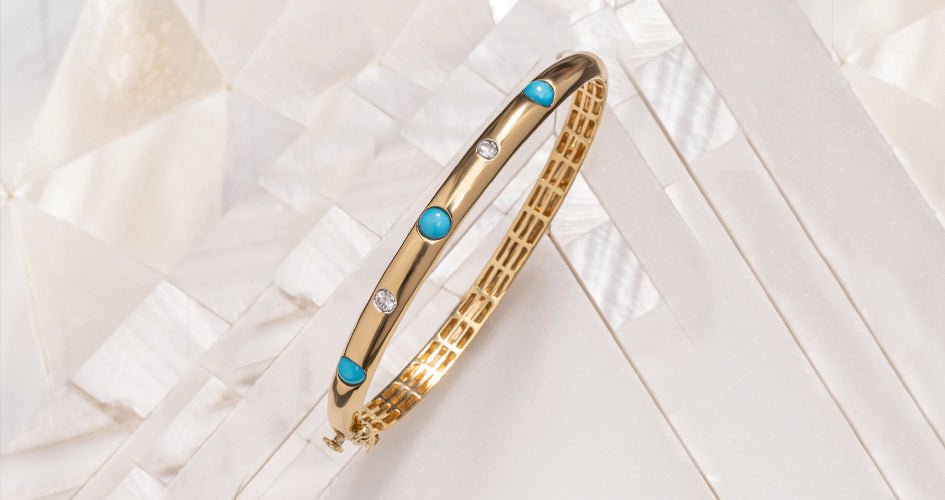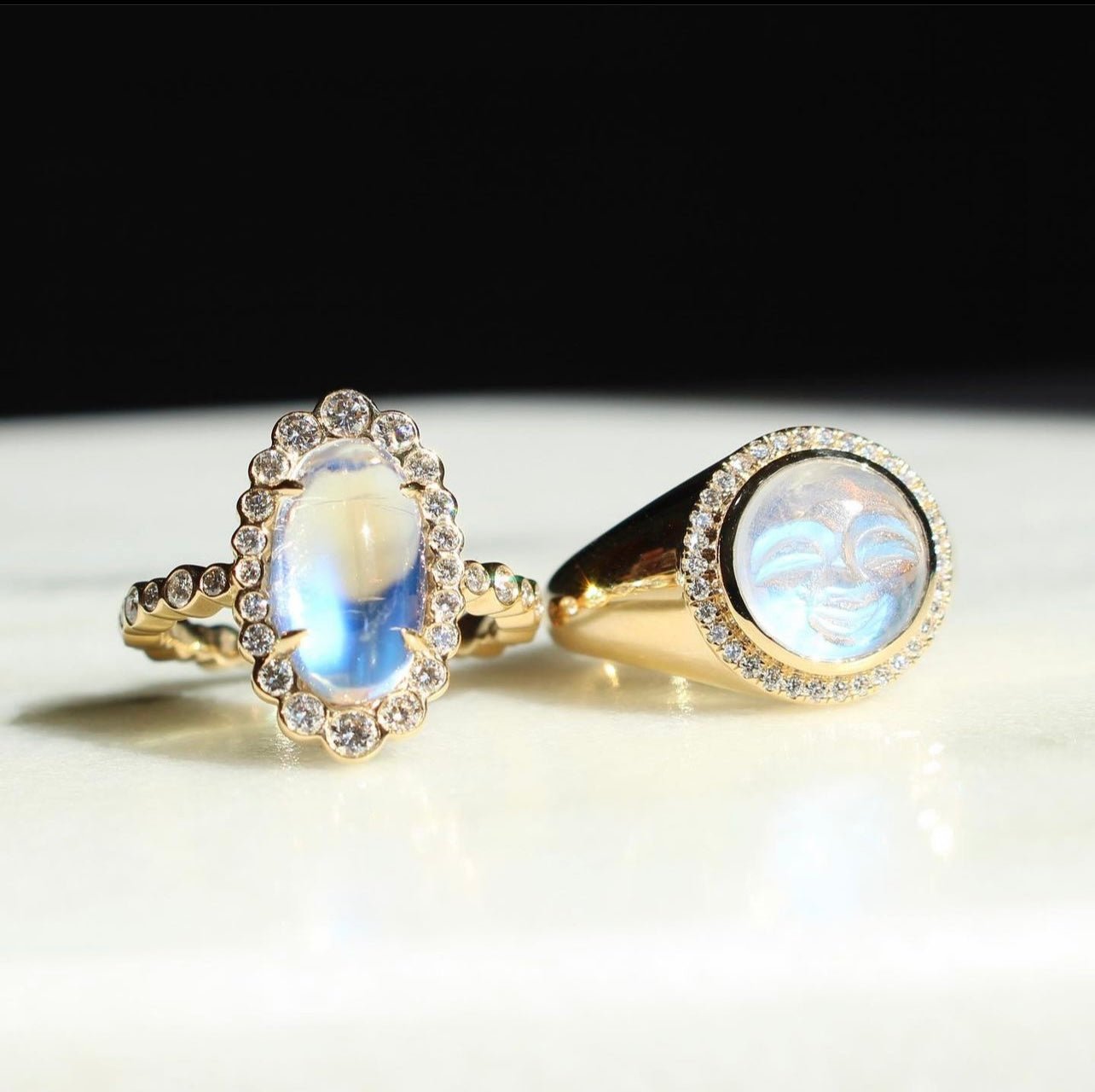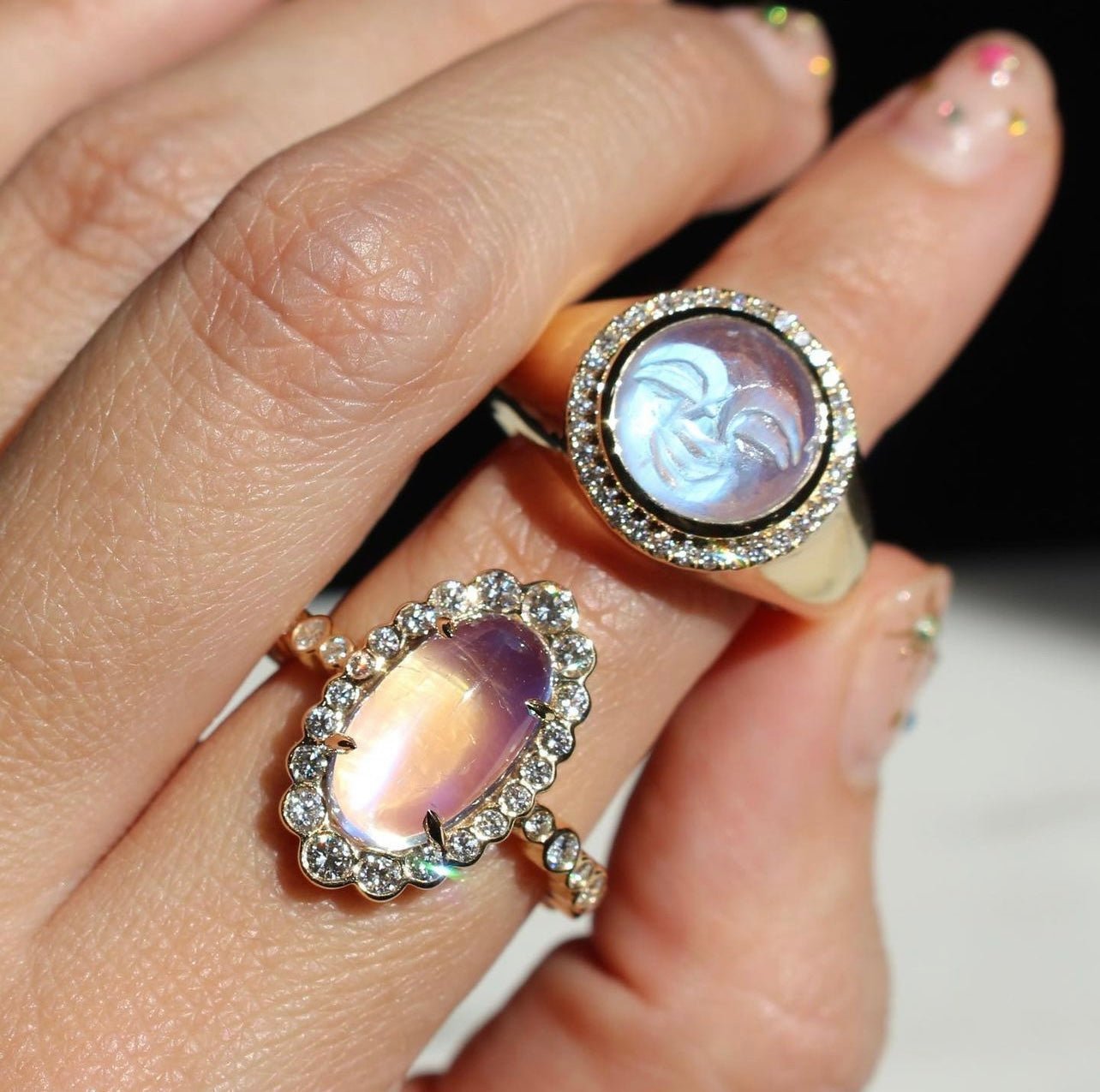There’s nothing quite like a little swatch of color in your wardrobe, even if it comes through in the most subtle or noticeable of ways. That’s what beauty is with turquoise. Whether you’re wearing a bold and electric piece on a necklace, flashing a striking spark with matrix inclusions on a bracelet, or bringing in stares from a pale and priceless blue ring - this stone has something for everybody. The vast majority of turquoise collectors tend to lean onto the side of robin’s egg blue, and while this may be the most prized variety, there is so much more to discover.
From a rich history to incredible symbolism, turquoise has withstood the test of time in more ways than one. It can be overwhelming when faced with so many options and locations while shopping for turquoise, but here at Mark Henry Jewelry, we have devised metrics for value to eliminate confusion.
Read on to learn more about this complex stone and how it can best serve you in your fine gem (or fashion) jewelry journey!
Where Did It Come From?
Turquoise has been dated in use as far back as 3,000 BCE where the ancient Egyptians mined for the stone. It was used throughout history for beading and architectural, or artistic, inlays. Persia shared this gem with Medieval Europe, who quickly fell in love with it. When a piece of turquoise has a pure, blue color due to small amounts of vanadium and absolutely no iron, jewelers take notice. This high-quality turquoise is often referred to as “Persian Grade,” whether or not it came from the modern-day-Iranian mines or not.
Where Has It Gone?
Today, most of the turquoise trade exists in Southwestern America, and much of it is run by the Indigenous peoples of each respective southwestern state. Nevada and Arizona, in particular, are well-known for their turquoise offerings. Popular mines in the U.S. include Bisbee Mine, Blue Diamonds Mine, Blue Ridge Mine, Carico Lake Mine, and Dry Creek Mine.
To Native Americans, turquoise represents so much more than a jewelry feature. It is believed to bring luck and strength, especially in times of illness. Specifically, turquoise can be used to treat those who have blood-related ailments, such as leukemia. For the Navajo people, turquoise is used to please the Wind Spirit. For the Zuni people, blue and green turquoise represent the man of the sky and the woman of the earth, respectively. The Hopi tribe believes that a lizard creates turquoise from his excrements throughout his travels above ground and below ground.
All folklore, legends, religious beliefs, and ceremonial rituals surrounding this stone add to its value, regardless of type, and make it incredibly important to treat with care and respect.
Turquoise Tutorial
Before we delve too deeply into the variations of turquoise value, first, we should dissect the basic properties of the stone. What is it made of, where is it made, and how does it function in use?
Some of the common elements in all turquoise are:
- Crystallography: Triclinic, with very rare crystals inside.
- Luster: Vitreous for crystals, otherwise waxy, dull, or earthy.
- Fracture: Uneven and conchoidal.
- Birefringence: 0.040.
- Cleavage: None in pieces big enough to be examined.
- Luminescence: Present, fluorescent. Green-yellow to blue in Long Wave and nonexistent in Short Wave or X-Rays.
- Transparency: Ranges from translucent to fully opaque.
This stone sits at a 5-6 on the Mohs scale for hardness, making it difficult to use raw without any form of enhancement or stabilization. While untouched turquoise can be quite valuable, it is difficult to shape into designs because it can crumble.
Consistency will be touched upon later, but the porousness of some turquoise pieces makes wearability low, especially for high-action pieces of jewelry such as rings, which are prone to being bumped around.
Formations and Foundations
Turquoise is formed in groundwater that sits amongst aluminum-rich rocks. It combines with available copper. This element is what adds blue to the stone, while chromium and vanadium contribute to green tones. Iron creates a yellow color, and this is why U.S. mines tend to produce many bluish-green tinted turquoise pieces because that land has high levels of vanadium and iron.
Value Matters
It is the most effective to determine the value of a specific piece of turquoise by separating its outlying properties into categories. Each category contains a different standard of quality, and has varying levels of importance in the piece’s overall value. For instance, color may determine the price tag of a turquoise necklace before its size does.
A Unique and Varied Color
As mentioned before, Persian Grade or robin’s egg blue turquoise is the most highly valued and the rarest form of turquoise on the market. It is considered pure and the closest to resemble that of the ancient mines.
Richly blue turquoise can be found in the U.S.; however, it is very rare. The Sleeping Beauty Mine in Globe, Arizona, was known for a light blue stone with zero inclusions, an immediate grab for jewelry makers. It was beloved by Zuni Pueblo artisans for its hues, and eventually, supply could not meet demand - the overwhelmed mine shuttered its doors.
However, at Mark Henry Jewelry, we are lucky enough to still have access to Sleeping Beauty turquoise, and we use it heavily in our turquoise pieces, especially in our Sleeping Beauty Collection.
Our Puffed Heart Solitaire Ring features a gorgeous Sleeping Beauty turquoise in its center. This delicate heart is set in gold and enhanced with the beauty of a string of diamonds. It is the perfect gift for a partner or loved one (or even as a nice treat for yourself).
White Buffalo turquoise is known for its pale, white coloring and can be found in a few states, specifically at the Dry Creek Mine in Battle Mountain, Nevada, where there is little copper and iron in the ground.
White Buffalo turquoise is incredibly unique and sometimes includes a beautiful black matrix. It has risen in popularity throughout recent years for its fascinating take on traditional turquoise. It is left unstabilized because treatments can bring out unwanted colors, tampering with the mesmerizing white.
Patterns and Inclusions
The clearer that a piece of turquoise is, the more valuable it will be. Yet, this is not the case on the modern-day market for those looking to deviate from fine jewelry. Turquoise is famous for its delicate matrix, inclusions of the rock it came from that spread throughout its body. This pattern may often resemble spiderwebs. They come in many different hues and can add a beautiful contrast from the main color of the stone.
At Crow Springs Mine near Tonopah, Nevada, green turquoise contains brilliant red matrix that can range from thin to very thick in vein size. Crowds are drawn to Sunnyside Mine turquoise in northeast Nevada as well. There, the spider web matrix is somewhere between golden brown and dark black, and the stones are still in circulation from the 1970s.
Texture
There is a big degree of importance riding on the makeup of a turquoise piece, particularly when it is being used for jewelry. It has to be durable enough to withstand long-term use, and the price will fall if it is too soft or porous for shaping.
At the Kingsman Mine in Mohave County, Arizona, a technique called stabilization was created to prevent cracks in the stone by removing moisture and filling in the gaps with a clear resin. This preserves not only the stone itself but also its colors. However, treatment can lower the price and value of the turquoise.
Birdseye turquoise comes in nuggets and can have a bumpy texture, which may be less valuable since it is difficult to cut down. The same goes for seafoam turquoise. Boulder turquoise is actually mined to visibly include dark pieces of the rock from which the stone formed, but it can tamper with a valued, consistent color that fine jewelers prefer.
Cut and Size
Typically, turquoise is cut into cabochons or beads, but depending on its inclusions (which imply it is of a lower value), it can be shaped to show off matrix at all angles. Since the stone itself has a weak pleochroism, there isn’t much to worry about preserving that front through cuts. However, since color evenness is such a large component in value, making sure saturation seems to flow is important.
At Mark Henry Jewelry, we are fine gem artisans. It can be trusted that all of our turquoise pieces are cut to perform to their best ability and showcase their best qualities. There is no room for dull or sub-par stones in our repertoire, and with so many options to choose from, there is truly something for everyone.
A Gem To Love
Turquoise is rich in color, history, and meaning. That is why we value it so much and why we love to share it with wider audiences. One of the wonderful things about turquoise is that its range in quality can make fine jewelry accessible to more buyers who may not be ready to invest in higher-priced pieces yet. What we love about turquoise is its rich past and vibrant future as a cornerstone in a wonderful jewelry collection.
Sources:
Types and colors of turquoise used in Native American Indian Jewelry | Horsekeeping
Turquoise Value, Price, and Jewelry Information | Gem Society


